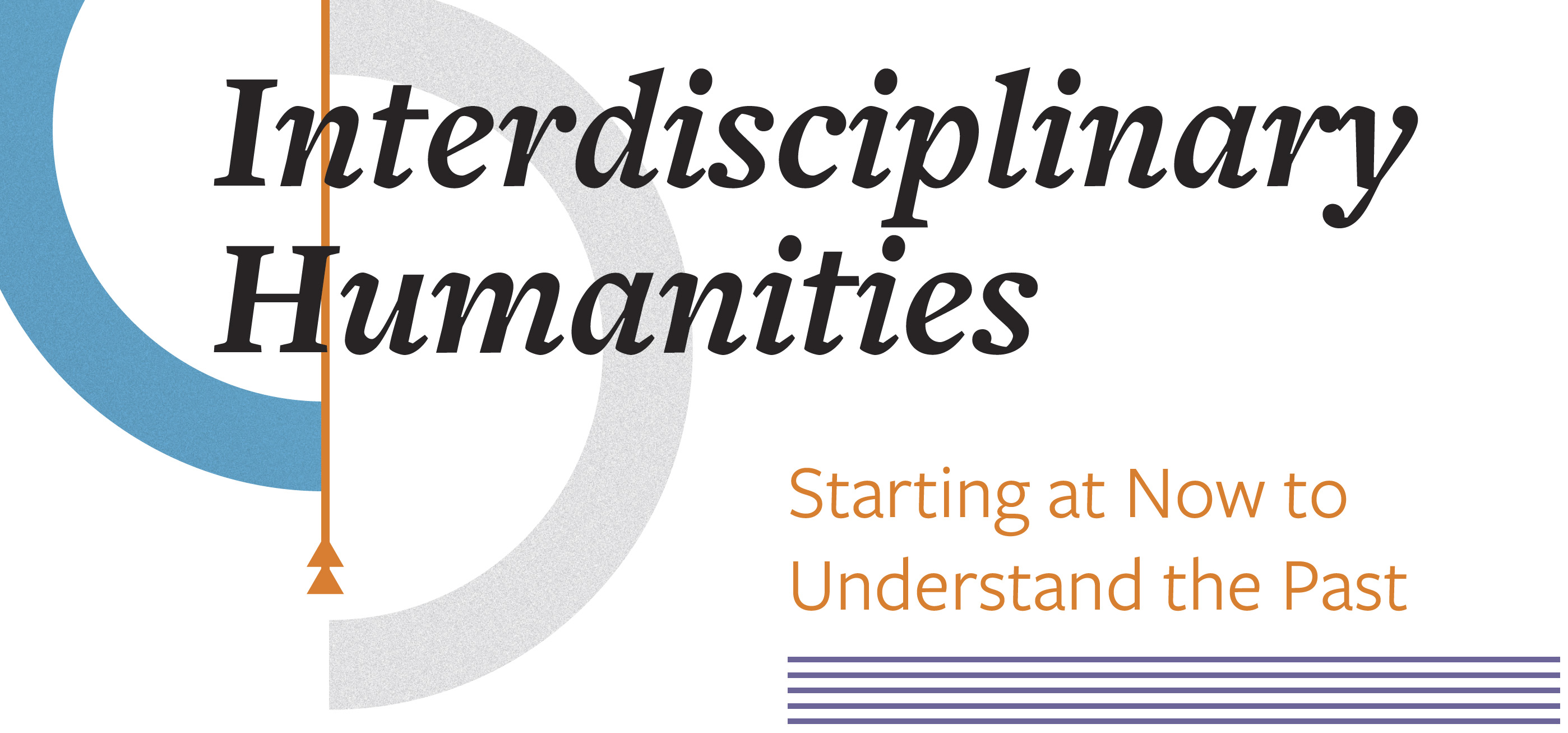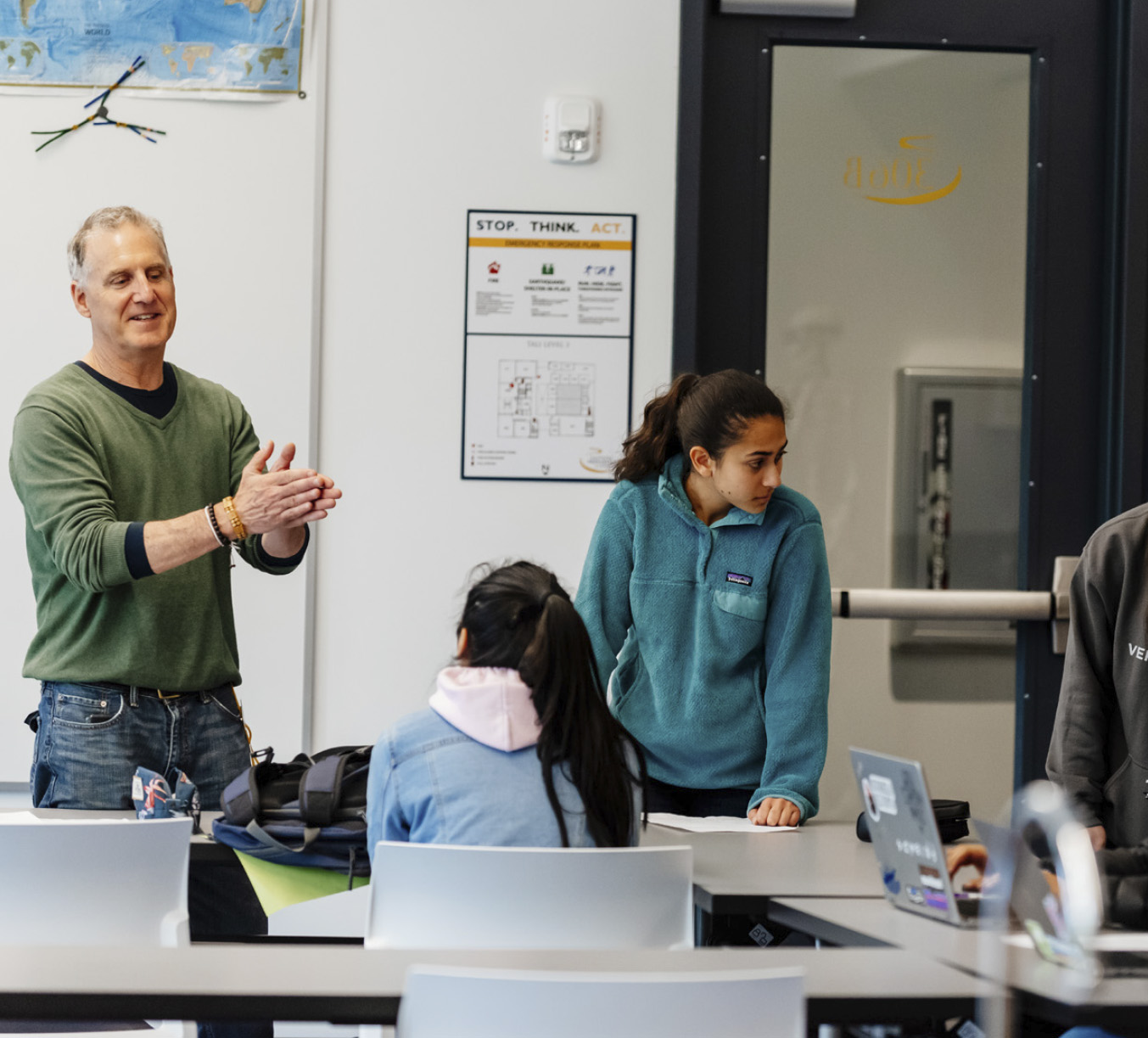
By Matt Delaney, Director of Academic Design and Integration
LIKE MANY HIGH SCHOOLERS, IN HISTORY CLASSES I was asked to memorize lists of facts and geographic locations but rarely asked to synthesize those facts and their ties to those geographic places in order to build my own meaning. In English classes, I read great novels but did not explore the historical context in which they were created.
Not surprisingly, even though I went on to focus on the social sciences and literature in college, I did so with little recollection of what I learned in high school because those class experiences were not designed for me to build my own understanding, but rather to listen to the understandings my teachers had already built for themselves. Equally significant was the fact that most of the topics we explored did not have an apparent connection to my life.
Reflecting on what I learned in high school, my strongest recall is associated with:
(1) Strong interpersonal experiences or performances
On the experience front, my ninth-grade English teacher walking from desktop to desktop eating leeks and reciting a Shakespearean sonnet comes immediately to mind. I later constructed my own sonnet minus the leeks and balancing act.
(2) Application of complex concepts
On the conceptual front, I remember my tenth-grade European History teacher detailing the essential components of just war theory and analyzing which conflicts qualified under the criteria. At minimum, the two words just war were something for me to wrestle with and attempt to reconcile.
(3) Understanding framed within the contemporary context in which I was living
As a twelfth grader, over the course of a term, I was asked to aggregate and analyze articles in The New York Times to answer a complex question: What patterns currently characterize the Japanese economy? The question focused on a single concept: economy; a single geography: Japan; and a single historical context: the modern world. Most interesting to me was that the question I was being asked to answer did not have one correct answer. In pedagogical terms, I now recognize this as a genuine inquiry.
The remainder of what I learned certainly played a role in the sequence of my understanding, but it did not necessarily contribute to core knowledge that I continue to reference as part of my worldview.
FROM CONCRETE TO ABSTRACT
People work to understand the world in relation to themselves, starting with the concrete and building to more abstract.
For example, as humans work to understand things chronologically, rather than start with where they are in time and then excavate the past in relation to that locus.
A good example of this type of thinking is captured in the progression of the Big Questions in Middle School:
Who am I? > What is the world made of? > How did we get here? > What does it mean to be human?
The logic follows that before one asks How Did We Get Here? one has to know where here is; for that matter, they also need to know what shifted from I to We, and ultimately, to being human.
In the early years of the EPS Upper School the science course progression moved from more abstract to more concrete. Ninth-grade students first worked to understand the smallest particles in Conceptual Physics, tenth graders the more visible chemical reactions of Chemistry, and eleventh graders larger organisms and human systems in Biology.
With a number of students struggling with the more abstract concepts in Conceptual Physics, and other students indicating that Biology felt more applicable and relevant to them, EPS adjusted its science sequence so students encountered Biology as ninth graders and Physics once they had achieved a higher level of mathematical understanding as eleventh graders. The goal was to move students in a more developmentally-appropriate fashion, from the immediate and concrete to understandings that were more removed and abstract.

CONTENT DIVERSITY AND CHOICE
As the second EPS class entered the EPS UUpper School in 2006, the current ninth- and tenth-grade humanities program and course pairings were launched.
While there were myriad benefits to educating such a small group of students, one thing that stood out as a challenge was making sure that such a small population of students had access to a diversity of course choices and a variety of peers in each class. To address this challenge, each term ninth- and tenth-grade students were given a choice between three different English and social science pairings. Accompanying those choices were new faces in each class.
With the current growth in the EPS Upper School, combining grade levels is no longer necessary to ensure social diversity in classes. At the same time, preserving choice and having students build a chronological frame for their understanding remain priorities as we evolve the academic program.
THE CHRONOLOGICAL BOOMERANG
Organizing concepts are the building blocks of academic disciplines. They are the organizing structures that were missing from most of my high school courses and part of the reason what I learned did not always travel with me.
With the goal of students building on and evolving their knowledge over the course of their lifetimes, EPS’s new ninth-grade humanities courses are organized around six core concepts.
Coursework (similar to the approach to the Middle School Big Questions and Biology as a first science experience) starts with an examination of contemporary topics, geographies, events, and novels that are relevant to students’ lives. Students choose from courses focused on Boundaries and Connections during the fall term, human Migration and Exchange in the winter term, and the Origins of human narratives and Authority in the spring term.
Throughout each course these central concepts are applied to multiple historical contexts and literary works, helping students build enduring conceptual understandings around how human societies emerged, proliferated, and evolved to current levels of complexity.
The new ninth-grade humanities courses ask students to engage with and understand complexity while participating in a narrative that aims toward a better world.
In the tenth-grade year, students boomerang or build back toward the present in course options focused, first, on ninetieth- and twentieth-century European literature and history in the fall term, and later, on twentieth- and twenty-first-century literature and history in Latin America, Africa, the Middle East, or Asia in the winter and spring terms.
RESEARCH AND DIALOGUE
Entering this new part of the program, ninth graders continuing from the EPS Middle School and those new to EPS, establish foundational skills and build capacity to do independent research during their Upper School and college careers.
Along with developing concepts and building context, they continue to hone tools of analysis and develop the technical skills needed to do formal research in the humanities—annotating, note-taking, citing sources, and dialoguing about content—all essential to preparation for college and beyond.
INTERDISCIPLINARY CONNECTIONS
Human history and narratives have increased in complexity over time, as have the problems that humans encounter, create, and need to solve. Most high school humanities curricula celebrate the beauty of human narratives in English classes and the downfalls of humanity in the context of conflicts and injustices. Rarely are these disciplines connected, partially due to history classes emphasizing a negative narrative of human development.
Mapping to the EPS vision statement, “Inspire students to create a better world,” the new ninth-grade humanities courses ask students to engage with and understand complexity while at the same time participating in a narrative that aims toward a better world—a world not so easily divided into different parts; a whole and integrated world.
The new ninth-grade orientation also offers new opportunities to draw connections to the ninth-grade Biology course. Whether making analogies between the cellular and political systems or pursuing questions of medical and biological ethics in the contemporary world, students will do so in the context of strong interpersonal experiences or performances, application of complex concepts, and understanding the contemporary context in which they are living.

THE CONTEMPORARY HUMANITIES AT EPS
1. Self-reflective
⇾ Acknowledging each student’s self in relation to the content
2. Concept and Context-driven
⇾ Framing human experience through seminal historical events and efforts of individuals
⇾Capturing the human experience through canonical and contemporary works of literature
3. Data-anchored
⇾ Using data to make distinctions between the way the world used to be and the way the world is, and predictions about the way the world will be
4. Interdisciplinary
⇾ Employing the methodologies and frameworks of multiple academic disciplines
• Social Sciences, Literature, Philosophy, Historiography, Economics, Technological and Scientific Progress
5. Solution-focused
⇾ Investigating past and enduring world problems and solutions/lack of solutions to those problems
6. Human-centered and Progress-oriented
⇾ Making clear connections between past and contemporary problems and their solutions

